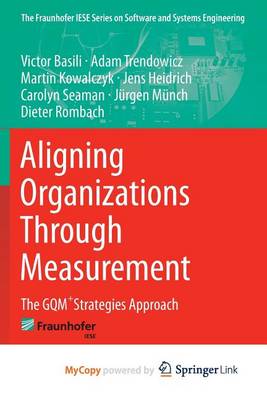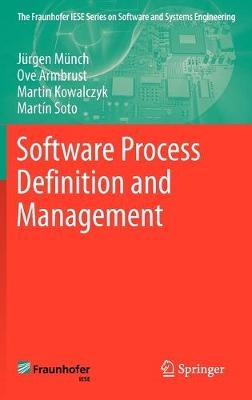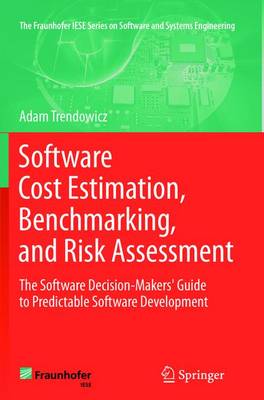The Fraunhofer IESE Series on Software and Systems Engineering
3 total works
Aligning Organizations Through Measurement
by Victor Basili, Adam Trendowicz, and Martin Kowalczyk
Aligning an organization's goals and strategies requires specifying their rationales and connections so that the links are explicit and allow for analytic reasoning about what is successful and where improvement is necessary.
This book provides guidance on how to achieve this alignment, how to monitor the success of goals and strategies and use measurement to recognize potential failures, and how to close alignment gaps. It uses the GQM+Strategies approach, which provides concepts and actionable steps for creating the link between goals and strategies across an organization and allows for measurement-based decision-making.
After outlining the general motivation for organizational alignment through measurement, the GQM+Strategies approach is described concisely, with a focus on the basic model that is created and the process for creating and using this model. The recommended steps of all six phases of the process are then described in detail with the help of a comprehensive application example. Finally, the industrial challenges addressed by the method and cases of its application in industry are presented, and the relations to other approaches, such as Balanced Scorecard, are described. The book concludes with supplementary material, such as checklists and guidelines, to support the application of the method.
This book is aimed at organization leaders, managers, decision makers, and other professionals interested in aligning their organization's goals and strategies and establishing an efficient strategic measurement program. It is also interesting for academic researchers looking for mechanisms to integrate their research results into organizational environments.
Software Process Definition and Management
by Jurgen Munch, Ove Armbrust, Martin Kowalczyk, and Martin Soto
The concept of processes is at the heart of software and systems engineering. Software process models integrate software engineering methods and techniques and are the basis for managing large-scale software and IT projects. High product quality routinely results from high process quality.
Software process management deals with getting and maintaining control over processes and their evolution. Becoming acquainted with existing software process models is not enough, though. It is important to understand how to select, define, manage, deploy, evaluate, and systematically evolve software process models so that they suitably address the problems, applications, and environments to which they are applied. Providing basic knowledge for these important tasks is the main goal of this textbook.
Münch and his co-authors aim at providing knowledge that enables readers to develop useful process models that are suitable for their own purposes. They start with the basic concepts. Subsequently, existing representative process models are introduced, followed by a description of how to create individual models and the necessary means for doing so (i.e., notations and tools). Lastly, different possible usage scenarios for process management are highlighted (e.g. process improvement and software process simulation).
Their book is aimed at students and researchers working on software project management, software quality assurance, and software measurement; and at practitioners who are interested in process definition and management for developing, maintaining, and operating software-intensive systems and services.
Software Cost Estimation, Benchmarking, and Risk Assessment
by Adam Trendowicz
Software effort estimation is a key element of software project planning and management. Yet, in industrial practice, the important role of effort estimation is often underestimated and/or misunderstood.
In this book, Adam Trendowicz presents the CoBRA method (an abbreviation for Cost Estimation, Benchmarking, and Risk Assessment) for estimating the effort required to successfully complete a software development project, which uniquely combines human judgment and measurement data in order to systematically create a custom-specific effort estimation model. CoBRA goes far beyond simply predicting the development effort; it supports project decision-makers in negotiating the project scope, managing project risks, benchmarking productivity, and directing improvement activities. To illustrate the method’s practical use, the book reports several real-world cases where CoBRA was applied in various industrial contexts. These cases represent different estimation contexts in terms of software project environment, estimation objectives, and estimation constraints.
This book is the result of a successful collaboration between the process management division of Fraunhofer IESE and many software companies in the field of software engineering technology transfer. It mainly addresses software practitioners who deal with planning and managing software development projects as part of their daily work, and is also of interest for students or courses specializing in software engineering or software project management.


